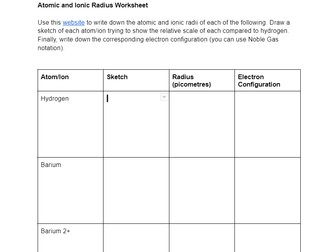Group Project: Create Your Own Periodic Table
<p>In teaching Mendeleev’s periodic table, I get the students to create their own tables of periodicity but exploring a topic of their own choice. It allows them to think in terms of properties alone without getting bogged down by details of protons or electron structure. It’s a fun, medium to long-term project that the students have quite enjoyed through the years. Other popular topics have included video games, movies, luxury brands and celebrities.</p>
<p>I use this for Year 10s IGCSE science students (9th grade), but could easily be applied for stronger students from a younger grade, or weaker students in an older grade.</p>











